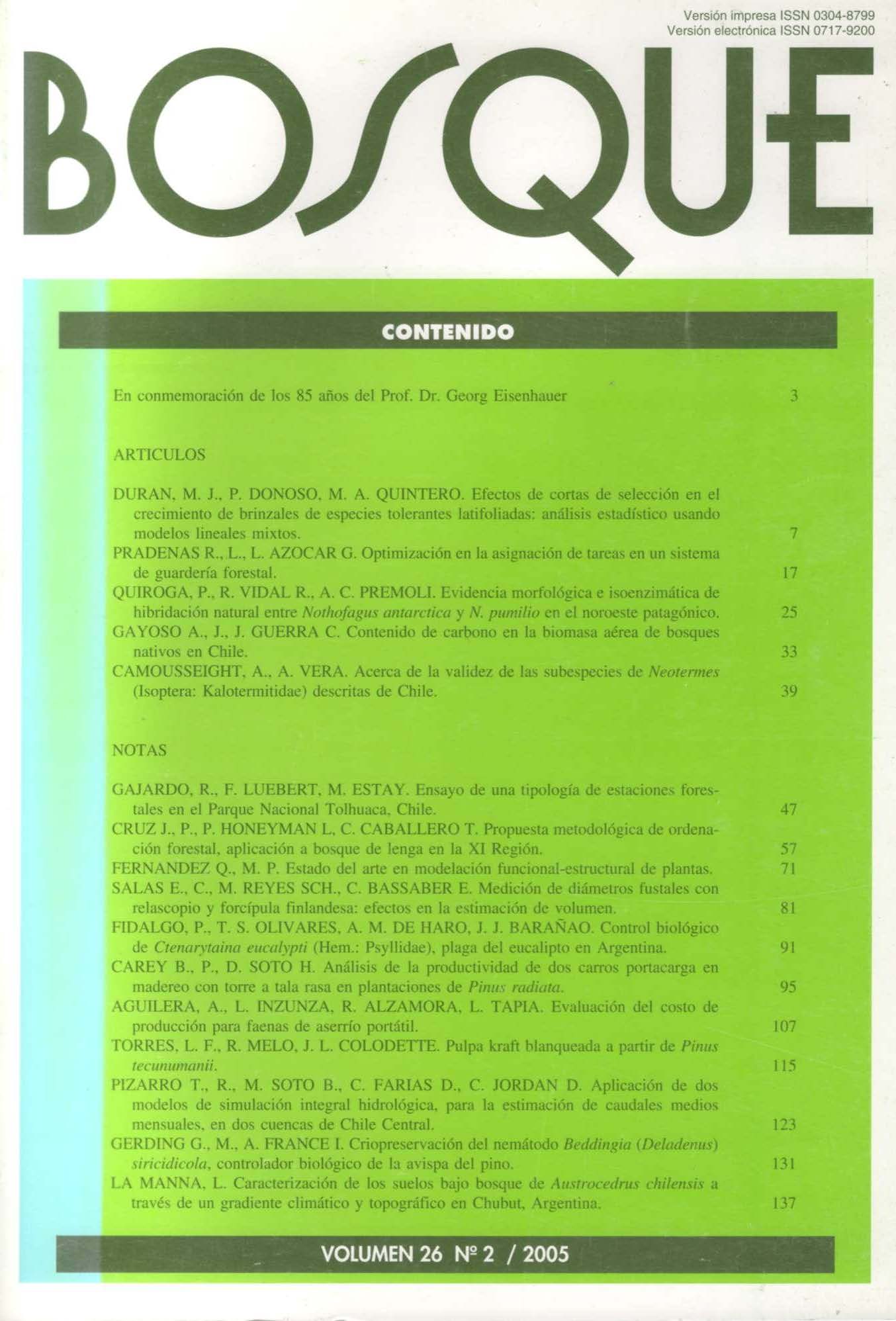Caracterización de los suelos bajo bosque de Austrocedrus chilensis a través de un gradiente climático y topográfico en Chubut, Argentina
Conteúdo do artigo principal
Resumo
Los bosques de Austrocedrus chilensis (Ciprés de la cordillera) se desarrollan en la región andino-patagónica, abarcando en Argentina un área de alta heterogeneidad ambiental. En este trabajo se caracterizaron los suelos donde se desarrollan bosques de A. chilensis, a través de un gradiente topográfico y de precipitación en la provincia de Chubut. Se seleccionaron 8 sitios de muestreo correspondientes a bosques puros y compactos de A. chilensis, abarcando un rango latitudinal aproximado desde 42ë0’ hasta 43ë14’ L.S. En cada sitio de muestreo se caracterizaron las propiedades morfológicas, físicas y químicas del suelo. Los bosques de A. chilensis se desarrollaron sobre suelos de diferentes materiales parentales: depósitos glacifluviales, aluviales, andesita, ceniza y pumita. Los suelos volcánicos presentaron discontinuidades litológicas, ya sea glacifluvial o material rocoso. En general, los suelos presentaron horizontes superficiales oscuros, ricos en materia orgánica (8,5 a 14,6%), con bajas densidades aparentes (0,57 a 0,97 g/cm3), y pH en agua neutro o ligeramente ácido todo a lo largo del perfil. Sin embargo, los diferentes materiales parentales determinaron grandes variaciones en textura (arcillosa a arenosa), contenido de fragmentos gruesos (0 a >50%), profundidad de suelo (35 a >140 cm), grado de alofanización (nulo a alto), contenido de humedad equivalente, etc. Los resultados evidenciaron la capacidad de A. chilensis para desarrollarse en suelos muy disímiles, desde suelos someros, arcillosos y con características vérticas, hasta suelos volcánicos profundos.

